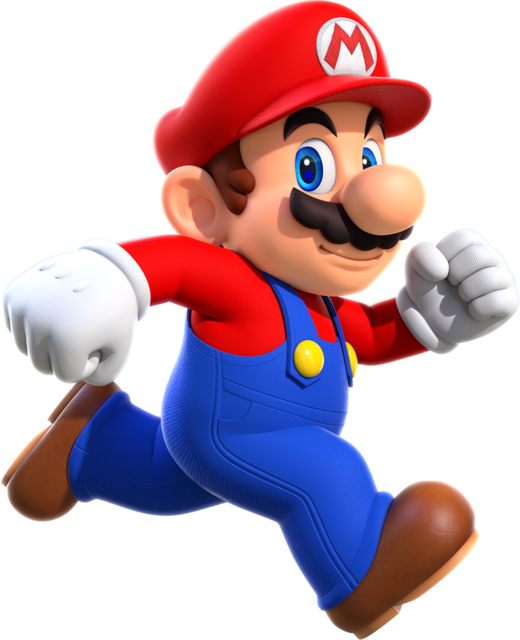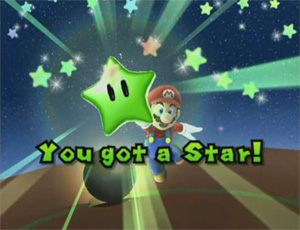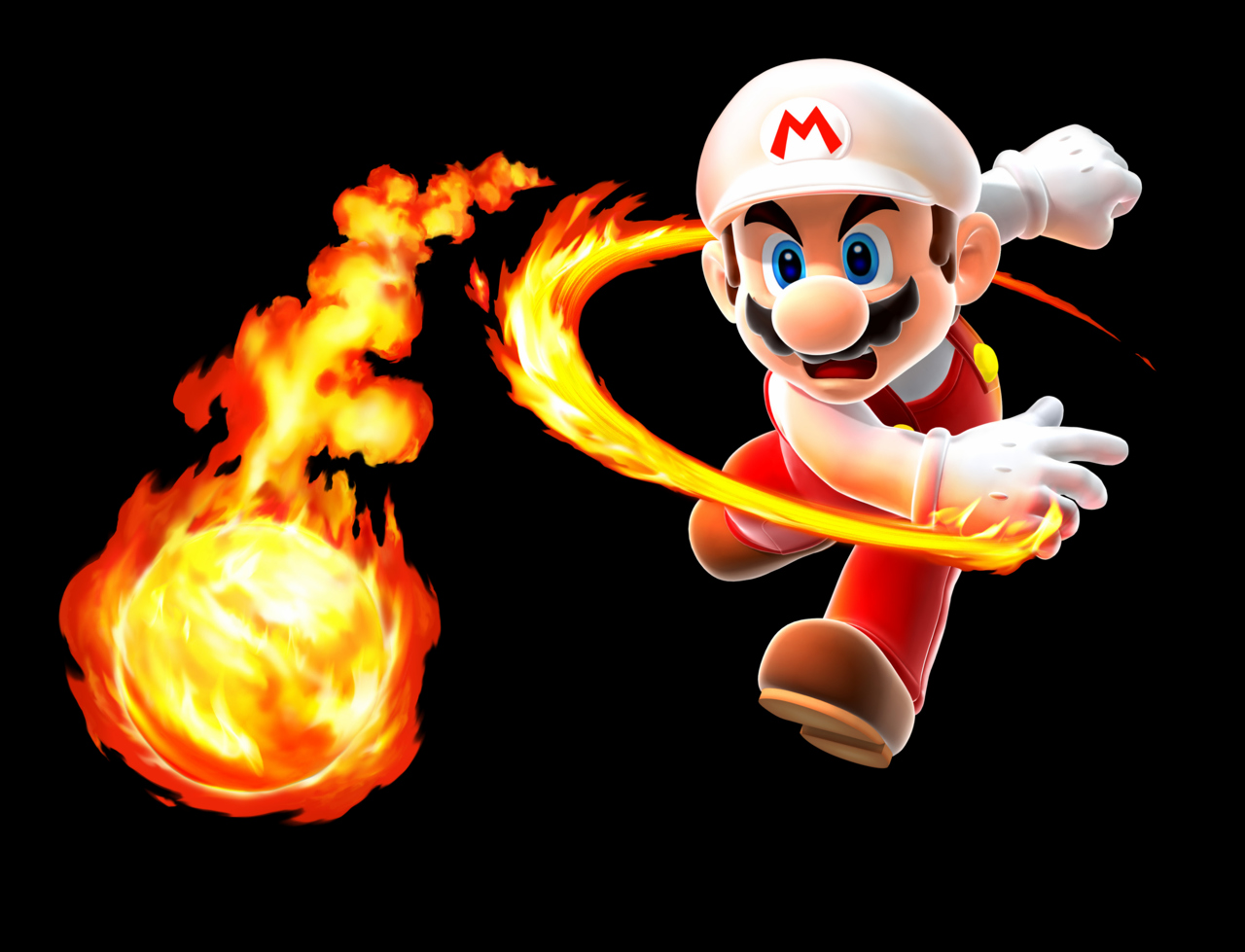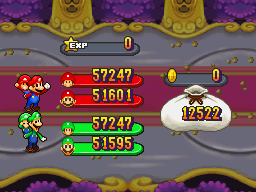
Originally a carpenter named Jumpman, this Italian plumber has gone on to become the most recognizable video game character of them all, starring in a veritable pantheon of titles like kart racing and sports. He has been voiced by Charles Martinet for nearly 20 years.
Overview
If you've found your way to Giant Bomb, you probably have a good idea of who Mario is and why he's significant. Mario is the character who launched Nintendo's first console, the Nintendo Entertainment System, into millions of homes around the world. He's since become the company's mascot and most beloved character. On top of this, he is also considered by many to be the face of the video gaming medium as a whole, and is consistently seen as one of the most recognizably loved characters ever created.
Mario lives in the Mushroom Kingdom, which is where he fights Bowser (originally called King Koopa). In most of his games, Mario is rescuing Princess Peach (originally called Princess Toadstool) from the evil Bowser. Mario has appeared in over 200 video games since his first appearance. Since Super Mario 64, Mario is currently voiced by Charles Martinet, who also voices Mario's brother, Luigi, their "evil'' counterparts, Wario and Waluigi, his friends Toadsworth and MC Ballyhoo and their baby versions of themselves, Baby Mario and Baby Luigi.
Characteristics
Despite his lengthy history, Mario does not have a solid personality, since it was for players to implant their own personalities into the character. When his demeanor is shown, Mario is aggressive and impulsive, sometimes doing things without much meditation.
Despite these flaws, Mario is commonly shown to be a brave and kind-hearted hero with a strong sense of justice and morality. More often than not, he is willing to put his life in danger to save millions of people from Bowser's destructive forces and any other villain.
Mario also has a small fixation on Italian food, such as pasta or pizza.
Origin

Mario can collect Power Stars during his adventures.
Mario was created by Nintendo game designer Shigeru Miyamoto and first premiered in Donkey Kong in 1981. Back then, he was a carpenter named Jumpman, who had to save his girlfriend Pauline from the eponymous rampaging gorilla. This was actually based off of the triangle conflict in the cartoon "Popeye" but since Nintendo could not get the rights to the show, they made up new characters Jumpman's name was changed to Mario after the landlord of Nintendo's U.S. office, Mario Segale, barged in asking for their rent; the surprising resemblance between the two made the name stick. After Donkey Kong, Mario began appearing in his own games. The first was Mario Bros., along with his brother Luigi. When the Nintendo Entertainment System was released, Mario went on to star in Super Mario Bros., one of the best-selling games of all time.
Mario's trademark mustache, hat, and overalls also have their own unique origin, connected to the primitive design capabilities of the time. Creator Miyamoto knowing that the character would have to be drawn very small on the screen used various subtle design decisions to make the character stand out yet still look memorable and unique. For instance the decision was made to give the character a mustache in order to tell apart his nose from the rest of his face. His proportions of his nose and eyes were also exaggerated and his overalls allow his arms to be a different color then the rest of his body, thus allowing for clear animation. Finally his hat was created because hair was too difficult to animate.
Being Nintendo's mascot, Mario's major rival is Sonic the Hedgehog ( Sega's mascot). Sonic and Mario's rivalry was incredibly fierce, until Sega became a third-party developer, and stopped creating consoles. Sonic Adventure 2: Battle was the first Sonic game to appear on a Nintendo console, ending the rivalry. Since then, Sonic has appeared in several Nintendo games, including Mario & Sonic at the Olympic Games and Super Smash Bros. Brawl.
Transformations/Enhancements
Mario grabs items along the way and if he collects that item, then he'll transform to his various forms. Here are the forms that he wore during his adventures:

Fire Mario
- Fire Mario - In this form, Mario can throw fireballs at enemies, making them hot and crispy for Bowser's minions. To transform to this form, he needs a Fire Flower.
- Vanish Mario - In this form, Mario's invisible. He can go through any enemy without being noticed. A Vanish Cap is required for him to transform.
- Shell Mario - In this form, Mario can glide along the ground and knock out anything that gets in his way. A Blue Koopa Shell is required for him to change.
- Boo Mario - Mario's ghostly form allows him to see through walls and makes him invisible. In order to transform to this form, he needs a Boo Mushroom
- Ice Mario - In this icy form, Mario can glide on ice, throw snowballs at enemies and create icy paths. An Ice Flower is required to transform Mario to his Ice form.
- Rock Mario - Mario can rock and roll in this form. With the Rock Mushroom currently equipped in Super Mario Galaxy 2, he can bowl over anything that stands in his way ranging from enemies to crystals! Bowling, anyone?
- Propeller Mario - A new form for him in New Super Mario Bros. Wii is his Propeller form. If Mario grabs a Propeller Mushroom, then he'll fly to various location while in this form.
- Bee Mario - In this form, Mario can fly in the air and stick on honey walls. To transform to this form, he needs a Bee Mushroom.
- Mini Mario - If Mario grabs a Mini Mushroom in both New Super Mario Bros. games, then he'll turn smaller and can float on water but if he is hit in this form, then he'll lose a life so watch out!
- Rainbow Mario - Another one of his forms is his Rainbow form. He can bash through enemies and run faster in this form. In order to become Rainbow Mario, he needs a Rainbow Star.
- Spring Mario - If Mario grabs a Spring Mushroom, then he'll transform into his Spring form. He can bounce through anything and reach to faraway places.
- Metal Mario - If Mario wears a Metal Cap in Super Mario 64, then he'll turn into a metal machine. While metal, he can walk underwater and defeat enemies in an instant.
- Wing Mario - Mario can fly in this form from Super Mario 64. To take off, he needs to do a triple jump or get shot out of the cannon and then he can fly anywhere in the game. A Wing Cap is required to transform.
- Invincible Mario - If Mario grabs a Starman, then he'll turn invincible. In this form, he can run through various enemies without getting hit. Watch out for Invincible Mario's speed because he could knock you out!
- Penguin Mario - A form introduced in New Super Mario Bros. Wii. It allows him to glide through ice and water and he can swim faster in this form. A Penguin Suit is required for him to transform.
- Super Mario - Mario's second form in his adventures. You need a Super Mushroom to transform.
- Mega Mario - If he gets a Mega Mushroom, then he'll turn mega. He can bash through anything in this form. Can be seen in New Super Mario Bros.
- Cloud Mario - In this form Mario can use clouds as platforms. He needs a Cloud Flower in order to transform.
- Cat Mario - Found in Super Mario 3D World for the WiiU, this suit allows Mario to climb walls and gives Mario a claw attack.
Alternate Versions
Through the years there have been many different versions of Mario appeared in different games:
Baby Mario
Baby Mario is the infant version of Mario. He first appeared in Super Mario World 2: Yoshi's island, released in 1995 for the SNES. He has appeared in many titles since.
Ever since his first appearance as merely the baby version of Mario in Yoshi's Island for the SNES, Baby Mario's place in the Mario timeline has always been a bit confusing. This confusion mostly comes from the fact that Baby Mario appears in many Mario sports titles as well as many Mario kart games alongside his fully-grown counterpart. This led many to the false belief that Baby Mario was, in fact, the son of Mario. Regardless of poor logic, Baby Mario actually did appear, legitimately, alongside adult Mario in the RPG Mario & Luigi: Partners in Time.
Because of the relative popularity of the character, Baby Mario has spawned many other "baby" counterparts of other popular Mario characters including Luigi, Peach, Donkey Kong, Bowser, Daisy, and even Wario. Though they appear, as previously mentioned, in Mario kart and Mario sports games, the babies have become a staple of the Yoshi Island series (most recently, the extremely popular Yoshi's Island DS).
- Super Mario World 2: Yoshi's Island (1995)
- Mario Golf (1999)
- Mario Tennis (2000)
- Super Smash Bros. Melee (2001)
- Yoshi's Island: Super Mario Advance 3 (2002)
- Mario Kart: Double Dash!! (2003)
- Yoshi Touch & Go (2005)
- Mario Superstar Baseball (2005)
- Mario & Luigi: Partners in Time (2005)
- Yoshi's Island DS (2006)
- Mario Kart Wii (2008)
- Mario Super Sluggers (2008)
- WarioWare D.I.Y. (2010)
Metal Mario
Metal Mario originally appeared as a power up in Super Mario 64, although he has since appeared as an unplayable character in the Super Smash Bros. Games. He is a stronger, heavier and slower version of Mario, and has a higher resistance to damage. He later appears as a playable character in Mario Kart 7.Cosmic Mario
A version of Mario that appears in Super Mario Galaxy. He only appears when there is a Cosmic Comet orbiting a galaxy. Whenever Mario encounters a Cosmic Clone, he will have to race the clone to obtain a Power Star.Cosmic Clones
Duplicates of Mario/Luigi that appear in Super Mario Galaxy 2. Cosmic Clones later appears in Super Mario 3D Land, only in the Special Worlds; in later worlds, they would appear gigantic.In the Super Smash Bros. Series
Mario appears as a playable character in all games of the Super Smash Bros. series. As with most games, he is seen as a balanced character with balanced stats, making him a great choice for beginners. The Super Smash Bros. games, espcially Brawl, give Mario a different portrayal from that of his original franchise. Unlike his normal happy and optimistic self, the Super Smash Bros. games portray Mario as a more stoic and serious character.
In Super Smash Bros., Mario is actually high tier, despite usually being the average character. He has many combo moves, namely his down aerial and Mario Tornado, and also many K.O. attacks. However, his K.O. moves are generally very slow.
In Super Smash Bros. Melee, Mario is nerfed, but he gains some new attacks, such as a new forward aerial which is a Meteor Smash, and a Cape, which reflects objects and turns characters around. He is middle tier, and he also has a clone character, Dr. Mario. Dr. Mario is of a higher tier than Mario because of his strong attacks, superior strategies, and heavier weight. Dr. Mario namely uses a Megavitamin rather than a Fireball, his forward aerial is not a Meteor Smash, his down tilt sends opponents behind him, his forward smash is more powerful and electric, and his back aerial is a good edge guard move.
In Super Smash Bros. Brawl, Mario has all of the same moves except for his Down Special, which was Mario Tornado, is F.L.U.D.D. Mario is low tier due to his below average attacks, speed, and recovery. However, his edge game has improved because of F.L.U.D.D., which can push away opponents from the stage edge. Dr. Mario has been removed, but the disc game data shows a folder named "DRMARIO", meaning either his files were imported for some reason, or he was a scrapped character for the game. His Final Smash is the Mario Finale, in which he unleashes a twin blast of flame across the battlefield.
Mario will appear in the fourth Super Smash Bros. game.
Super Smash Bros. Brawl Quotes
- "Here we go!"
- "Let's a-go!"
- "Yahoo!"
- "Oh yeah!"
- "Hee-Yahh!"
Legacy
Games in the Mario series are constantly redefining their own standards, and often influencing the games that follow as a result. Super Mario Bros. defined the 2D platforming genre in the mid-80's. Super Mario World showed the abilities of the Super Nintendo with scaling and rotation of sprites, and gameplay mechanics that rewarded 100 percent completion of levels. Super Mario 64 famously set the standard for 3D platforming, and for taking traditional 2D franchises into the third dimension. Most recently, Super Mario Galaxy has offered innovative uses of the Wii's unique control scheme along with the sequel Super Mario Galaxy 2. Even offshoot games like Super Mario RPG and Paper Mario have consistently surprised Mario's fans with their refreshing and unexpected styles of gameplay. Mario has also starred in many spin-off sports games, ranging from racing ( Mario Kart) to golf and tennis ( Mario Golf, Mario Tennis) and baseball ( Mario Baseball), as well as a successful series of party games ( Mario Party).
Trivia
- Mario has a mustache because he was too small to draw a mouth onto when he was first created.
- It was difficult to animate hair and ears at the time, explaining why Mario has a hat and sideburns.
- Mario and Luigi are both bright colors to make them stand out from the background of the older games.
- Mario also wears bright colors and overalls to fix a problem with Mario's hands disappearing when he walked.
- In Mario's first appearance, the color of his overalls were red and his shirt was blue, an opposite of the clothes we see him wear today.
- Mario is named after Mario Segale, the landlord of one of Nintendo of America's original warehouses who was lenient with Minoru Arakawa while Nintendo was still finding its feet in America.
- Similarly, there is a speculated theory that Mario and Luigi received their names from the Japanese words marui and ruiji , holding the meaning of "round" and "similar" respectively.
- Mario makes a cameo appearance in the original Game Boy game Alleyway as the pilot of the paddle ship.
- Mario is the older of the two Mario brothers.
This page has been seen 127 times.
-
-
Created by on
-


